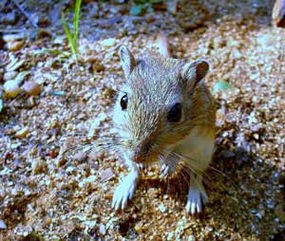
The park's waters, woodlands and fields support nearly 50 species of mammals, including eight species of bats. White-tailed deer, fox, raccoon, and rabbits can be frequently seen from roadways and in the fields. Muskrat, mink, otters, and beavers are more elusive and use the creeks and rivers as their habitat and travel way. Muskrats live in or near marshes along the parkway and in the marshes bordering Wormley Creek in Yorktown. Downed trees along the marsh/forest edge in Jamestown and dams along creeks in Yorktown signal beaver activity, and river otters have been seen swimming under parkway bridges and in the marsh creeks on Jamestown Island. It is a rare delight when a park visitor or staff sees a bobcat or its tracks along a sandy beach. At dusk, bats, opossums and skunks come out to forage and hunt. The smallest mammals are rarely seen by the casual visitor because the move through tall grasses, under forest litter, or underground. The most abundant and widely distributed mammal in the park is the white-footed deermouse. Mice and northern short-tailed shrew live in the old fields in Yorktown while mixed forest habitat supports two other species of shrew. Moles, voles and mice are important recyclers in the ecosystem, feeding on dead plant material and insect grubs, while they furnish food for foxes, snakes and hawks. FUN FACT A small population of bobcats exists within the park. The bobcat is the most common wildcat in the United States and has the greatest habitat range of any cat native to North America. Found in almost any climate, Bobcats will eat a variety of prey, generally small woodland animals such as rabbits, squirrels, birds and rodents. Because they hunt at night, they are not likely to be seen by visitors. |
Last updated: September 22, 2022
